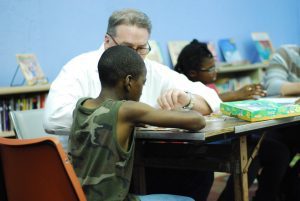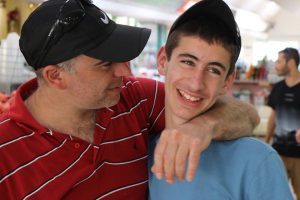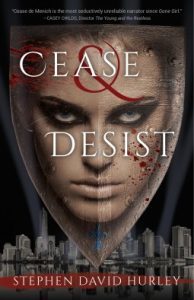Stephen David Hurley's Blog, page 2
October 18, 2016
Gender

I’m feeling pretty “Cisgender” after the big storm that hit San Francisco this week. I’ve been clearing the fallen brush and leaves around the house in a pretty “manly” way. And for those of you who are as clueless as I am about gender terms, the definition of cisgender is “a person whose gender identity and biological sex assigned at birth align.” I guess that makes me “normal” only anyone who follows the progress we’ve made with gender identity in this country knows there is no “normal.” There never really was. And do you know what that means?
Gender is the new dirty word for all of us who can’t accept that there is no normal.
I hear it in the speeches of politicians. I see writing on the walls, literally as some institutions refuse to comply to the myriad differences that make up sexual identity and hold firm with bathroom signs that designate biology, not choice.

As a nation we’re pretty “Gender Binary” which means that most of us consider all people are either male or female. No exceptions. I’m indebted to Samuel Killerman, gender advocate extraordinaire, for providing me with these terms in his pathbreaking list of LGBTQ glossary. He’s the author of the blog: It’s pronounced metrosexual. And I’m indebted to him for sharing these resources. The trouble with being either/or is that you miss the real person, like reading a predictable novel with a predictable, cardboard character.
Wake up, Hillary. Wake up, Donald. Young people are smarter than you think.
Great fiction has already moved beyond either/or and that’s the reason I think it’s more instructive to us than laws and institutions. Imagine trying to help a young person who is struggling with his or her gender identity. Which of the following options would you choose to help them?
Ask them to watch the last three Presidential debates, and list all the conflicting references to sex, rape, gender, and assault.
Hand them a copy of Will Grayson, Will Grayson and say, “I’d really be interested in hearing what you think about this book.”
Perhaps that’s a bit too simplistic, as it probably takes more than a book to get people to see what they don’t want to see. And that’s why I’m devoting this week to interviews and guest posts from the leading thinkers and writers who want to share about what being a young man or a young woman feels like. And I want to inaugurate our dialogue with this simple question: Has there ever been a time of your life when you didn’t feel like the “sex” you were assigned at birth?
That’s a tough question for any adult, and an even tougher question for a young person who’s judged every nanosecond on his and her identity.

*****
If you enjoyed this post, please subscribe to the blog and use the share buttons below to share this post with your friends.
The post Gender appeared first on Fiction, Faith & Young People.
October 7, 2016
You Want the Truth? Try Fiction.
This is the time of year when “Book Club” begins at most schools. I have my students read a young adult novel and we gather in a circle to discuss it. They “make connections” between their lives and the lives of their characters. We “draw inferences” and try to read between the lines about what our favorite characters are thinking and why they take the action they do. Book Club used to be fun, easy, and productive as a time-tested way of engaging students’ understanding. But it isn’t easy anymore, not since YA became so dark. We used to talk about easy, predictable, morally-sound books where the people who did bad were caught and punished. The system used to work in YA literature, at least that’s what we wanted to believe.
But now YA has gotten dark. Our subjects are suicide, date-rape, bullying, school shootings, and abusive parents (and teachers). I admit I don’t shy away from these topics. I search for contemporary stories with troubled characters for a reason. Parents read some of these books I’ve suggested for Book Club and I get emails. They shake their heads and wring their hands and exclaim how bad things have gotten, as if the state of our kids are out of their hands. I stop them as respectfully as I can when they do this. I say don’t you think we are partly responsible how tough things have become? They nod their heads and we agree or respectfully disagree while doing nothing about the real problem: Young people are forced to deal with really adult problems and we aren’t giving them the right resources to handle them. When I say this to parents or administrators at schools I get the usually recitation of the resources that are in place; the suicide counselors on staff, volunteers who monitor railroad crossings, clinicians, law enforcement. Weapons. Laws. Institutions. The system works, they insist. But none of those things really help to get inside the minds of young people the way story does. That’s what I’ve found as we raise the stakes and dare to talk about the issues most kids and adults are hoping will just go away.

Book Club used to be a tool to check comprehension. Now, it’s a forum where you hear students making connections like this: “A friend of mine is just like this character because she was thinking about suicide and reading Wintergirls helped her see that she wasn’t really crazy at all.”
“A friend of mine”…I’ve begun to hear that expression more and more as my students share. Have you ever been so ashamed of something that when you go and seek help you can’t admit you have the problem? I have and used the same expression when I talked to a doctor.
This is the second year I’ve invited parents to Book Club and listening to them share about their fears really helps my students see that they are not alone.

Come join the dialogue.
*****
If you enjoyed this post, please subscribe to the blog and use the share buttons below to share this post with your friends.
The post You Want the Truth? Try Fiction. appeared first on Fiction, Faith & Young People.
October 3, 2016
…Back In My Day…


I caught myself using that term to a young person and he cringed when he heard it. I can’t really blame him. He let out a long sigh. He knew what was coming next…”things were tougher”…back in my day. “We had to do all the term paper research by hand”…back in my day. “Young men didn’t expect to go all the way on a first date”…back in my day.
Adults—do you know what we are really saying when we say this?
THINGS WERE BETTER BACK IN MY DAY.
Are you sure? Or, are we just being a little envious about all the freedom and choices young people have today? And why not. We had to go into a library to do our research. We couldn’t just cut and paste our way through a term paper. We didn’t have the instant gratification that comes with instant access…
Young people have it too easy, is really what we are saying.
But do they?
We had bullies and gossip mongers and queen bees, but could anyone post images of our privates for the whole world to see? We had lists of the most beautiful girls. The handsomest boys, but no one could send those lists to thousands of followers in a few minutes.
Our suicide rates for young people were lower…back in my day.
Young people today must guard against a lion’s share of judgment from the ogling eyes, and the groping hands. How do we help them cope? By imposing tougher laws, a la the Brock Turner incident. But, when does erecting a law help a young person understand how to behave in situations where “correct” behavior is almost impossible to process with all the conflicting messages online.
I know a solution. Find a book, a YA novel with a really tough theme; suicide, date rape, trans-gender issues—all those things that weren’t really talked about…back in my day.
I think I’ve found one to share with parents and young people. Laurie Halse Anderson’s Wintergirls. Some of you mentioned it in my last post where I asked you to name some books that might help us bridge the growing divide that laws and lectures can’t address.
I will share some of the themes from Wintergirls for parents to discuss with their kids. And to be completely honest, I don’t think things were better back in my day.
*****
If you enjoyed this post, please subscribe to the blog and use the share buttons below to share this post with your friends.
The post …Back In My Day… appeared first on Fiction, Faith & Young People.
September 26, 2016
Who’s Your Favorite Superhero? Why?

That’s the writing prompt I give to my class and the results are startling. I love reading their opinions on who has the most awesome superpower, and whether Batman or Superman would win a battle. I love reading their stories because like most adults I love super heroes, too. But I love them for reasons I don’t really want to admit. Watching Spiderman indiscriminately take out an arch- villain who has thumbed his nose at our criminal justice system gives me great satisfaction.
And that’s a problem, because I know in my heart, a superhero is really nothing more than a vigilante in a fancy suit. How does the blissful destruction of a bad guy help young people navigate the gray areas of conflict resolution? They don’t. Aren’t there powerful, awe-inspiring characters who are real and human and complex enough for us cheer on?
There are role models for us in YA literature; young people who overcome incredible hardship without wearing a cape. They are real. They are flawed, and the more I study them the more I realize it’s not their superpower that attracts me, it’s their flaw and how they overcome it to save their world.
Parents. First, thank you for reading my posts, and commenting on some really tough issues like suicide and sexual violence. I want to ask you another favor. Could you write down three real-life “Superheroes” who you’d like to share with your kids. I will post your responses and we will share on what those people had to overcome to find success.
Young people. I thank you in advance because your homework is going to be a little harder than what your parents got this week. I want you to find a fictional story on any topic with a character who has overcome great hardship. He or she does not need to “save the world” to be a hero. She needs only to have survived an injustice and stood up to her adversaries in some way.
I look forward to sharing with you soon.
*****
If you enjoyed this post, please subscribe to the blog and use the share buttons below to share this post with your friends.
The post Who’s Your Favorite Superhero? Why? appeared first on Fiction, Faith & Young People.
September 21, 2016
Teen Suicide

I’m waiting beside the train tracks at the corner of Alma Street and West Meadow Drive in Palo Alto. I’m waiting for the train to pass, when I spot a man on the side of the tracks dressed in a lime green jacket beneath a lime green awning with a pair of binoculars and a utility belt. He’s wearing a headphone. He must be a crossing guard only I’ve never seen a crossing guard so well-equipped. In fact, I haven’t seen a crossing guard on the Caltrain tracks, ever. As the train approaches he carefully studies the tracks with the binoculars. The train passes. I ask him what he’s doing. He tells me he’s a volunteer on “suicide watch.”
In a single year, four teenagers have committed suicide by walking in front of speeding trains. I read about them; bright, promising young people in an affluent and extremely competitive town, Palo Alto. Why? Everyone wants to know. And everyone is frustrated that no one wants to talk about it. No one wants to talk about it because no one knows how to talk about suicide, at least not in a way that can help young people.
“It’s very difficult and it’s very sensitive,” Caltrain spokeswoman Tasha Bartholomew said.
So sensitive that most of us want to ignore it. Palo Alto set up a committee comprised of pediatricians, schools, police and community agencies after the first two suicides this year “to come up with a response to address this pattern.” Gunn High School, where the victims attended school, referred all questions to the Palo Alto Unified School District. A district spokeswoman said there would be no statement from either the school or the district because “it’s just felt that’s the best approach.”
Is it? I think there’s another approach that parents, teachers, and students should be taking. What if parents could pick up a copy of Jay Asher’s Thirteen Reasons Why. Or, Laurie Halse Anderson’s Wintergirls. Read it. Talk about what it means and share. I don’t know either of these authors personally but I do know how these novels have helped raise questions in the classroom many teachers and parents are ill-equipped to talk about.


I’d like to ask all the young readers a question and they are welcome to respond in whatever way that feels safe for them. Has a friend, fellow student, family member ever come up to you and confided thoughts of suicide? What did you do to help them? Have you ever read a story with a character who committed suicide? What book was it? What did you think of the story? Of the character?
Parents or any adults currently reading. I’d like you to share with an answer to this simple question. What inspirational novel would you recommend to a young person who appears depressed?
This is the dialogue I want to nurture on my blog. It may not be as easy as posting gushy raves about our favorite YA reads, but I think it will be rewarding to share authors who can help us deal with some really tough issues. It’s tough to break the ice on a topic these sensitive, so I will give out a copy of my YA debut novel, Cease & Desist, that has a character who commits suicide before the story begins. The first two responses from anyone will get this book.
*****
If you enjoyed this post, please subscribe to the blog and use the share buttons below to share this post with your friends.
The post Teen Suicide appeared first on Fiction, Faith & Young People.
September 12, 2016
A Blog Post About Sexual Assault and Young People

This is the start of a new school year, a time for teachers to lay down the procedures (we don’t like to call them rules) about acceptable behavior at school. I make a poster for my classroom. At the top I write RESPECT and then I get my students to help me make a list of what is considered acceptable behavior. It used to be pretty straightforward; treat others the way you wish to be treated golden rule type of things. But that was before the sexual assaults on campus, the accusations of groping and body shaming, and the constant sexting made it clear we live in a different world then most parents and teachers ever imagined. Is it me, or is the problem getting worse? I knew sexual assaults are a reality on high school and college campuses, but I teach middle school. Last year I caught a sixth grader sharing a pic of his privates with another student. Am I out of touch? Maybe. But one thing I know for sure, parents and teachers need more tools to deal with sexually active young people. Not just rules and consequences, but a framework we can use to handle what has become a national epidemic.
And that’s the reason I started this blog. Parents need tools to talk to their kids about what constitutes a healthy sexual relationship. Young people who are being bombarded with conflicting messages about sex, don’t know where to turn for advice. I have a simple solution for how to begin a dialogue on sex, young people and relationships.
Fiction, stories about subjects that we are too afraid to talk about; because fiction, at its best shines a light on those dark secrets we are too afraid to discuss. In the coming months, I will be asking young people to suggest fictional stories they really loved and wish their parents would read. Parents in turn, will be giving me a list of books they wish they could share with their kids. We will share these books and their important themes in a safe and respectful forum.
Do you want to join a national dialogue on sex and young people? Then please give me your email below. We will be sharing stories by great authors. Stories about dark, unspeakable themes in YA literature. We will do this to shine a light on the all too truthful fears we have about sexual assault. Join the dialogue today. Write me a message and answer this question: what story would you most like to share with your parent or child?
I look forward to sharing your answers next week.
Photo credit: Unslpash.com
*****
If you enjoyed this post, be sure to share with your friends using the little share buttons below. Also, please subscribe to the blog in the form below!
The post A Blog Post About Sexual Assault and Young People appeared first on Fiction, Faith & Young People.
June 18, 2016
Why I Wrote Cease & Desist

Every 2 minutes an American is sexually assaulted.
And every 8 minutes, that victim is a child. Meanwhile, only 6 out of every 1,000 perpetrators will end up in prison.
A majority of child victims are 12-17. Of victims under the age of 18:
34% of victims of sexual assault and rape are under age 12.
66% of victims of sexual assault and rape are age 12-17.
One in 9 girls and 1 in 53 boys under the age of 18 experience sexual abuse or assault at the hands of an adult.
82% of all victims under 18 are female.
Females ages 16-19 are 4 times more likely than the general population to be victims of rape, attempted rape, or sexual assault.
The effects of child sexual abuse can be long-lasting and affect the victim&’s mental health. Victims are more likely than non-victims to experience the following mental health challenges:
About 4 times more likely to develop symptoms of drug abuse
About 4 times more likely to experience PTSD as adults
About 3 times more likely to experience a major depressive episode as adults
***
Young people are bombarded with confusing and often misogynistic messages from the world around them —60% have seen online porn by the age of 14. Teenage girls are getting pressured into having sex, and a recent BBC Freedom of Information request revealed that 5,500 sexual offences, including 600 rapes, were reported to police as having taken place in schools over a 3-year period. That’s almost exactly one rape per school day.
The post Why I Wrote Cease & Desist appeared first on Fiction, Faith & Young People.



